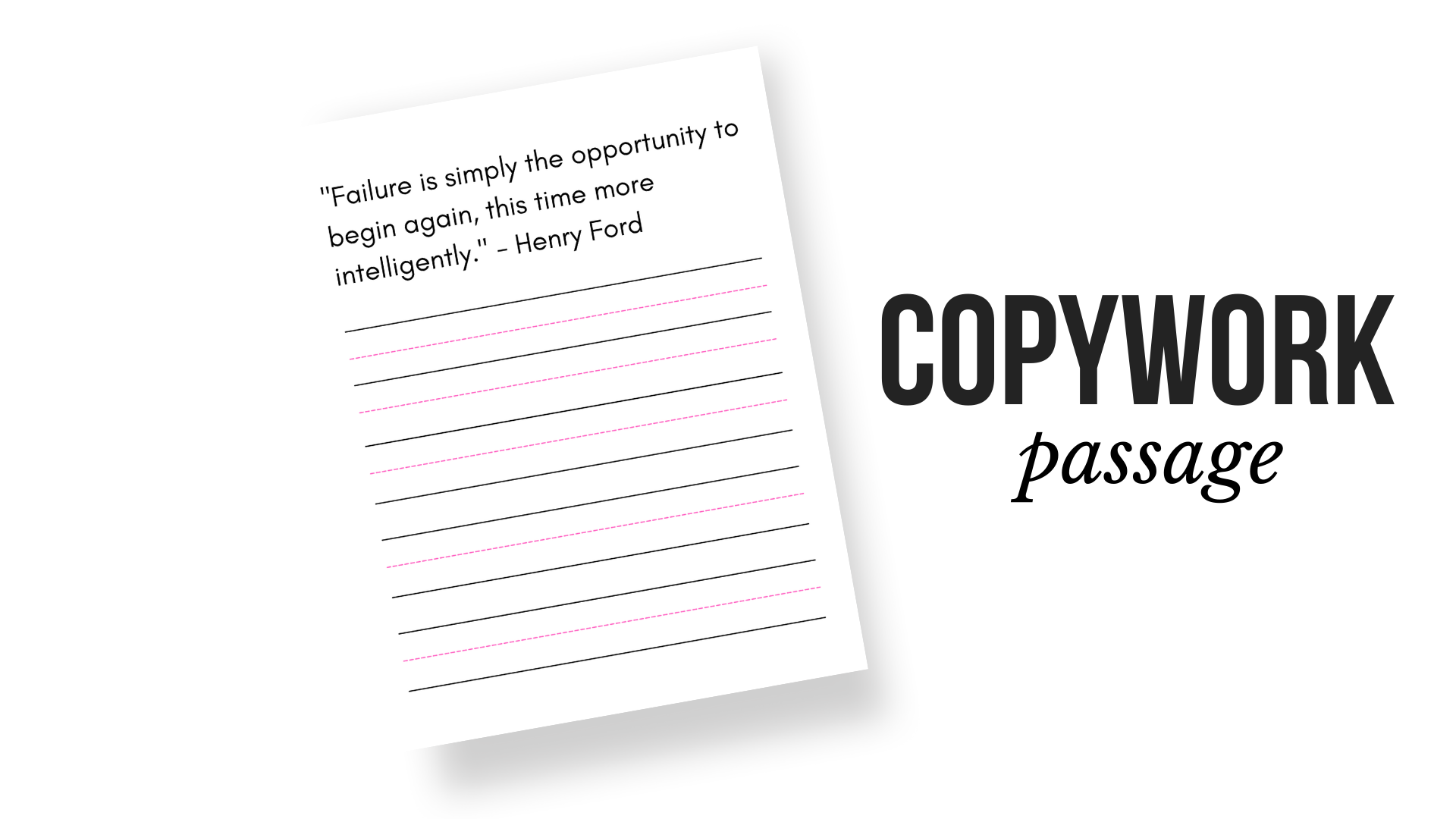The Problem with Copywork {and what to do instead!}
Do your kids cringe at the sound of copywork?
Copywork is a traditional practice amongst many homeschool families - especially those who follow a Charlotte Mason approach - where children copy pre-selected passages in their best handwriting. Usually, a piece of copywork is a short passage from a book, poem, verse that represents high quality literature.

But is this best practice for children when it comes to teaching the art of writing?
Research in the field would say no.
In the olden days, children learned to write using an apprenticeship model, copying master's works. They learned trough the process of imitation.
Today, there is a great deal of evidence to support children learning to write in much more meaningful and authentic ways.
According to Cynthia Puranik of Georgia State University, there are two emerging theories about how children learn to write.
The first is cognitive-linguistic theory - teaching of discrete skills needed to write. The second is grounded in social-cultural theory - where children learn to write through social context, in interaction with peers and capable adults. (Puranik, 2018)
Today's blog post shares three research-based strategies you can incorporate that draws on those theories, instead of the old-fashioned practice of copywork, so that your child learns to write in developmentally appropriate ways, has more ownership of their writing, and actually enjoys the process of learning to write.
1. Share the Pen
Have you ever climbed a tall ladder?
A little scary, right? We start at the bottom, making sure we have a strong and solid foundation, and use the support of the wall to lean on. In education, this is called "scaffolding." We hold our child's hand, model for them and help them with tasks that feel a bit out of reach.

Share the pen is an example of scaffolding. Together, you and your child take turns writing something meaningful (a story about something that happened on the weekend, a recipe, a retelling about a story you just read...) You model for your child what it means to stretch out a word slowly, to write the sounds he hears, and leave spaces between words, and form letters correctly.

Your child will likely feel more confident and ready to take risks in his writing now that he has had that support.
2. Edit their own work
Instead of copying the work of someone else - even great poets and writers - why not have your child edit their own work? You can use an excerpt from their writing and using another piece of paper, copy their passage using conventional spelling. Ask for their help with the editing (spelling mistakes, punctuation, omissions, capitalization) and then finally, have them re-write the passage correctly.

This is much more meaningful and authentic than copying some arbitrary passage of literature that has no connection or meaning to your child. Using their own work and ideas means that your child will be much more invested and have more ownership of their writing. In this approach, they are learning the skill of editing, a process all good writers must learn.
3. Morning message - work on ONE specific skill at a time
Morning message is a daily letter written to your child, with a specific literacy focus. In my practice, I have five rotating skills we practice, and a different focus each day of the week. {I teach these inside of Artful Teaching. Joyful Learning.® the K-1 All-in-One Curriculum and Implementation Course}.
This focussed literacy rhythm allows you to focus on one particular strategy per day, and your child is not overwhelmed by all conventions needed.
In copywork, children have many tasks on which to focus. They need to:
- mind the lines (make sure their handwriting is anchored on the lines of the page - a very difficult skill for young children)
- attend to spelling conventions
- use heavy visual processing as they look at the passage, and then back at their own work
- decode words (likely not even words they know how to spell yet!)
- print legibly
In morning message, the adult educator is modelling good writing, and in real-time, uses teachable moments to model different literacy skills. It is an interactive, back and forth process, and children's involvement helps them construct their own understanding of the written word. This is called Constructivist learning theory: children building their knowledge about the world, rather than being passive receivers of information {like in copywork}.

An example of one morning message strategy is "Transformers," where we use letters from the message to record new words. This is known as a making words strategy, and helps our young learners with spelling skills and sight word reinforcement.
There may be fear or insecurity about abandoning copywork altogether. After all, it is a neat and tidy exercise, fairly prep-free way to keep our kids busy, but there is very little research in the field to support this kind of learning.
Opt for ways that involve our children more inclusively- their words, their work - and you'll likely have much greater cooperation and enjoyment from them, serving them with tools needed to grow as budding authors.
If you've enjoyed reading posts about teaching children to write, and are looking to bring more creativity to learning, join me for my step-by-step Bookmaking Workshop!




